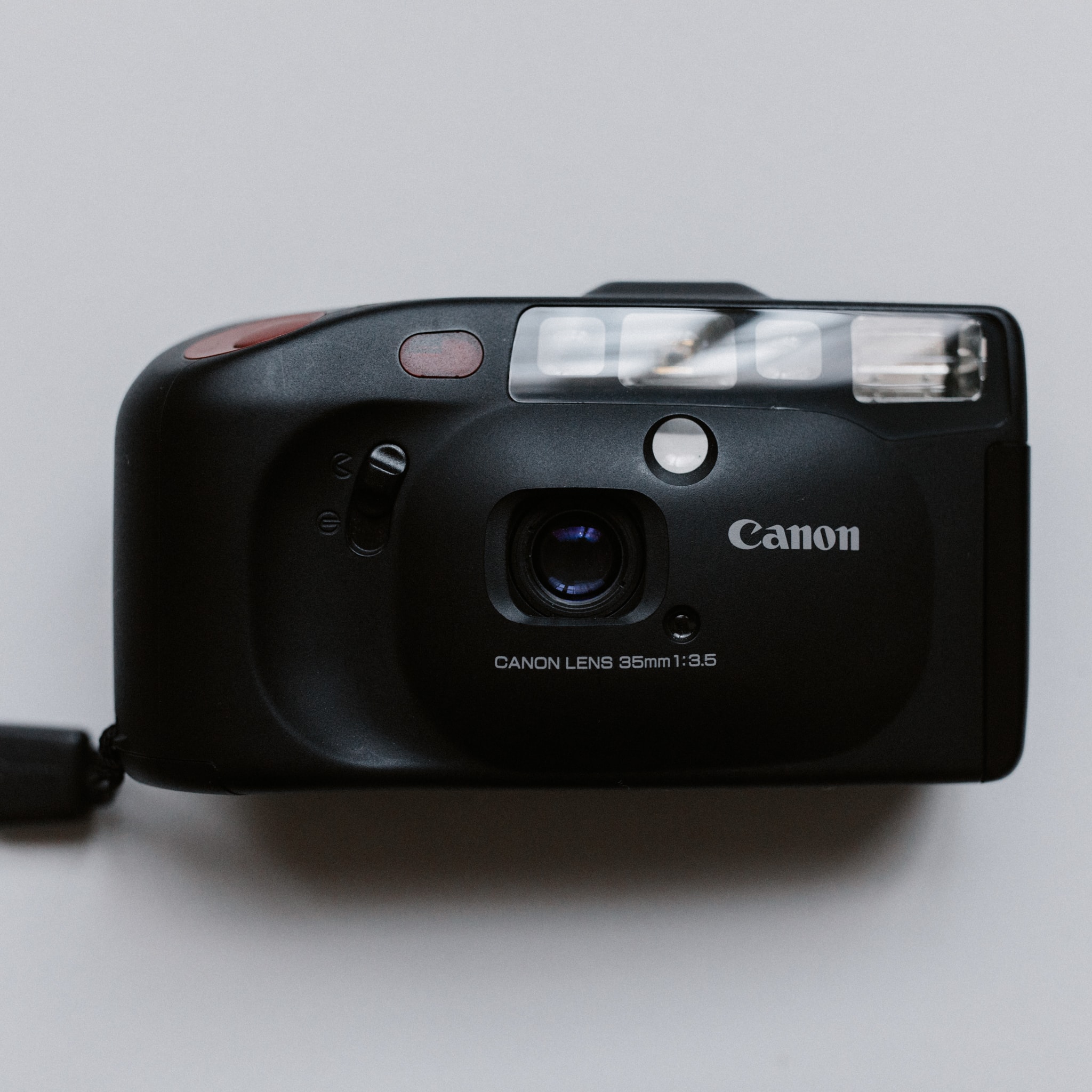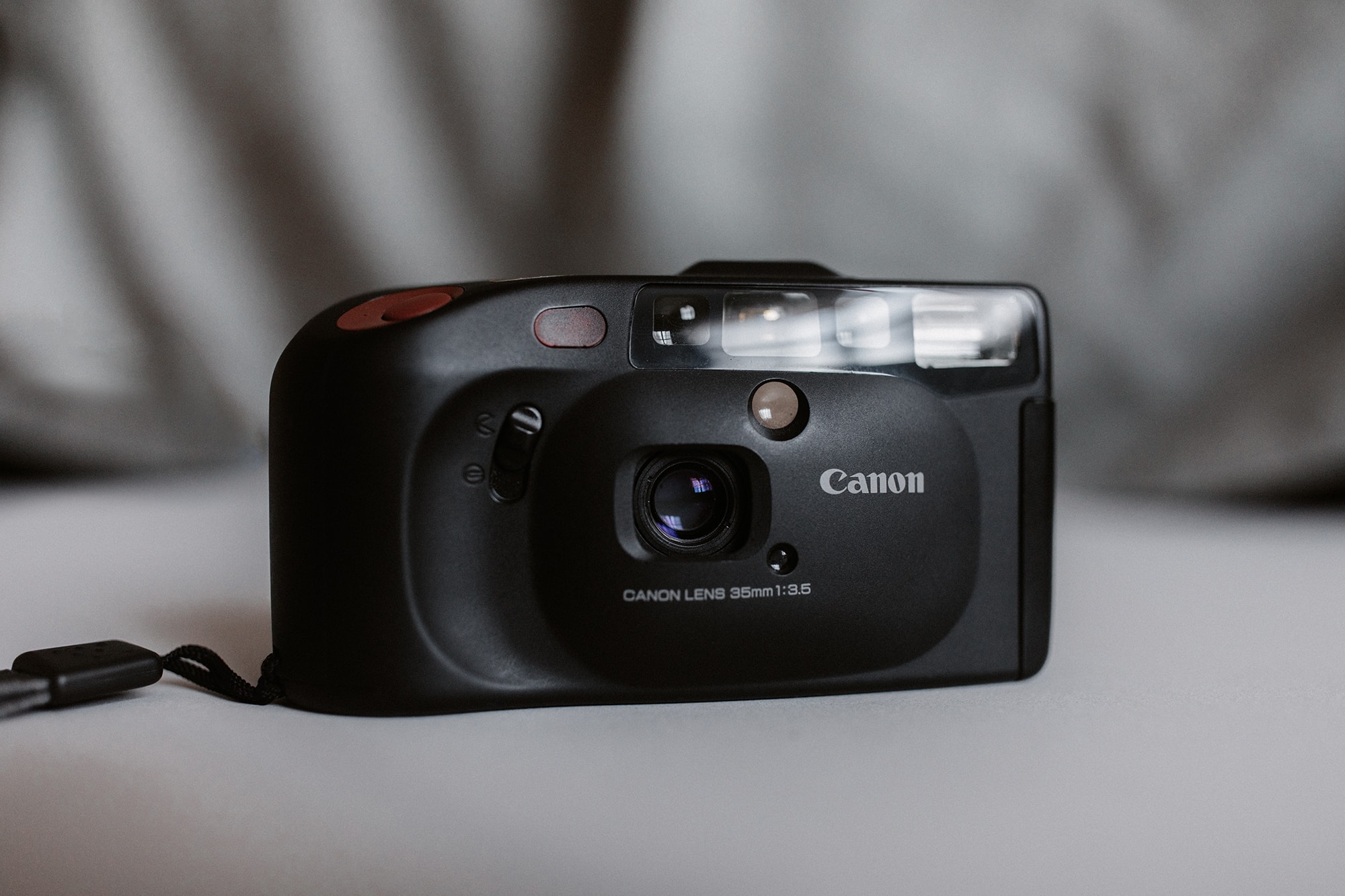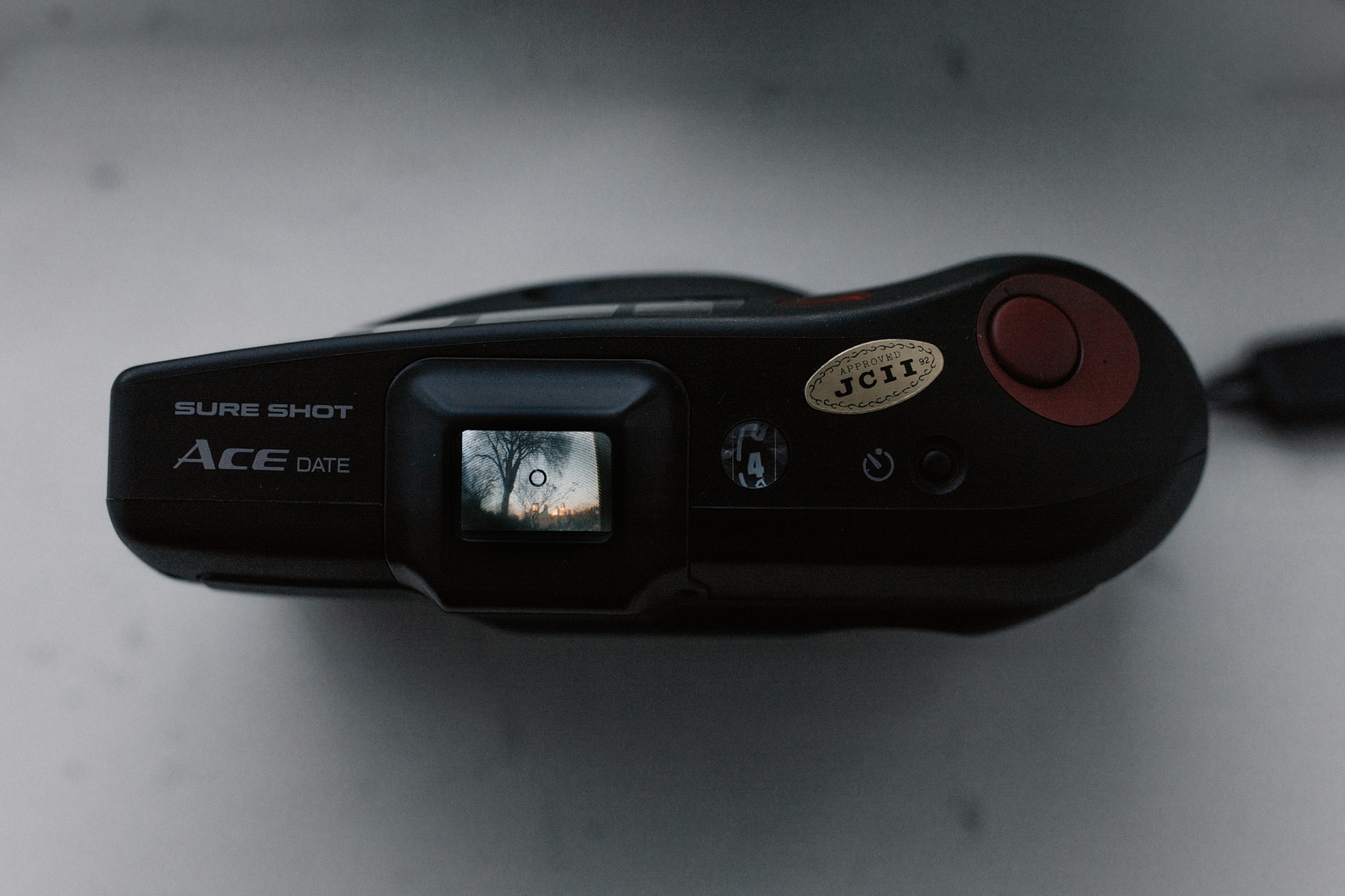


The Canon Sure Shot Ace is the cheapest camera I’ve ever purchased. It also happens to be my favorite mass-market film camera. After my friend told me about this gem, I found one online & paid $10 for the camera with its original case and strap. A copy of Popular Photography that I dug up from February 1990 shows an original sale price of $135.
The camera might have fallen by the wayside along with the countless other automatic 35mm cameras of the 90s, had it not been for its quirky features. The Canon Sure Shot Ace features a detachable remote control built into the camera body, two viewfinders (a waist-level viewfinder & standard viewfinder), and a swiveling peg on the bottom.
It should be noted at the outset that this camera does not align with the goals of most photographers. Calling it The Best is a bit misleading. For one, it does not have a super sharp lens; just a simply constructed 35mm f/3.5. If you’re seeking to get the best technical image from a compact film camera, this one isn’t for you.
As such, this review will skip most of the technical specifications of the camera. All that can be found online by searching for the camera manual. We will instead focus on its use and images.

Compared to many small compact cameras of the time, this one is a beaut. My copy has a simple matte black finish, minimal white type, and a large red shutter button, which is a perfect accent. The rounded design was innovative; more like Canon’s future DSLRs than to its peers. The camera shape and shutter button style make it natural to hold.
The Ace has a built-in lens cover, which is opened by moving a small switch that turns on the camera at the same time. A swiveling peg underneath allows you to prop the camera upwards on the floor or on a table, giving a perfect angle for a selfie. This feature was, apparently, way ahead of its time. Right next to the peg is a tripod bush, which I don’t see often on compact cameras like this one.
The viewfinder is well integrated into the style of the body. The only other compact camera I know of that has successfully executed a waist-level finder is the Yashica T series. While the Yashica is arguably the better (and more expensive) camera, the Canon has the superior waist-level, both in size and in that the focus point is clearly marked on the screen.

The camera itself is easy to use. It’s all automatic, from the metering & auto-focus to the flash. The primary controls are two buttons, one to uncover the shutter, and another to fire the camera. A 10-second self-timer button is also featured, but I’ve rarely used it. So you do have to be comfortable with allowing the camera to take over the technical functions. The photographer just points, shoots, and trusts that an image has been captured. The restriction is also freeing, allowing one to focus more on the composition or the subject.
The operation is likely too noisy for photographers that prefer to be discreet, such as street photographers. Focus is confirmed with a click, and then after pressing the shutter button, you hear the shutter firing and the film winding to the next shot. There is no way to hide the fact that you just took a photograph. This might even defeat the purpose of a waist-level finder, which promises secrecy.
The swivel foot and detachable remote the camera’s most unique features. They are intuitive and elegant.
Underneath the camera, you just turn the swivel foot and press the adjacent button to detach the remote from the body. The camera can sense when the remote isn’t there, and will activate a small red light on the front of the camera. Point, click; and after 2-seconds, the camera fires. Simple.
PS. Something cool I discovered is that the remote that detaches from the Ace also works with DSLRs. When pointed at my 5DMKIV, the remote fired the camera after a 2-second delay.
All cameras with electronic winding motors die eventually, and when this kind goes, there isn’t any hope for repair. A failed motor has killed each of my 3 Nikon Action Touch cameras. It doesn’t matter how much you take care of them. The good news is that you can always find another Sure Shot for cheap. Worry less about the camera’s well-being and more about the shot. Even as this camera becomes rarer and prices increase, you will still likely save on buying rolls of film over single-use cameras, both economically and environmentally.
I love this little camera’s lens. It is a fixed 35mm, and sports a decently wide aperture of 3.5 (Most compact cameras only go down to 2.8). In this sense, the Ace outperforms similar cameras that contain a zoom. The fixed focal length lens also helps with composition. Once I knew my viewfinder, I could easily throw the camera up above me and compose a snapshot without having to look through the viewfinder for more than a second.
I’m always impressed with the result of images taken in daylight and in harsh light. I’m not sure how this camera meters light, but it does a damn good job.
My friend, Beth Cath, also shoots with a Canon Ace. She sent me some images for use in this review. They are an excellent example of how the Ace handles tough lighting situations.